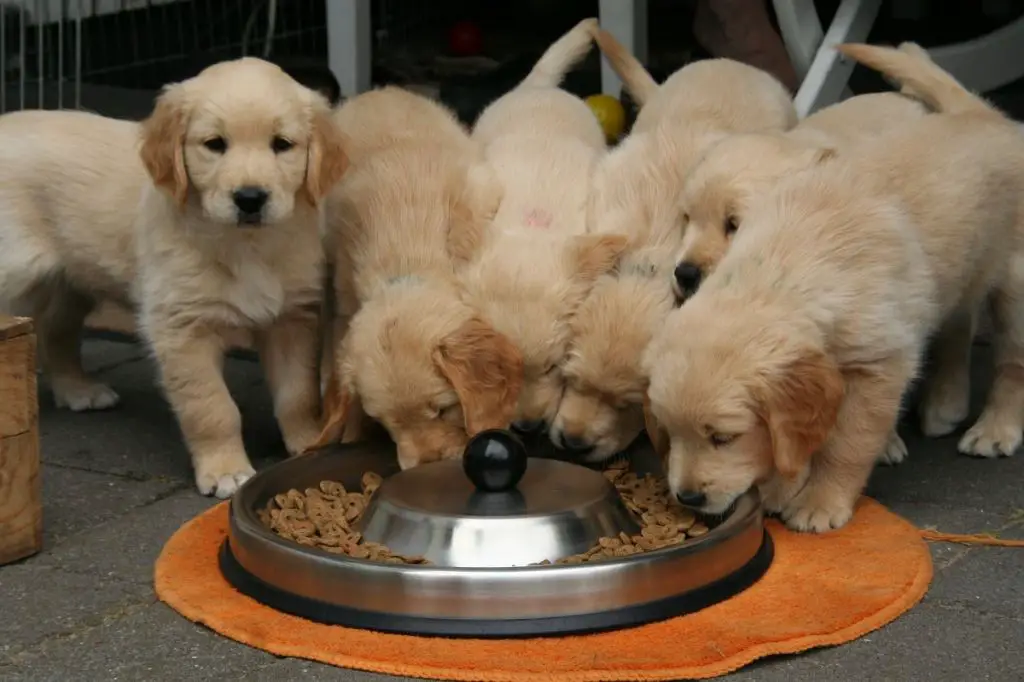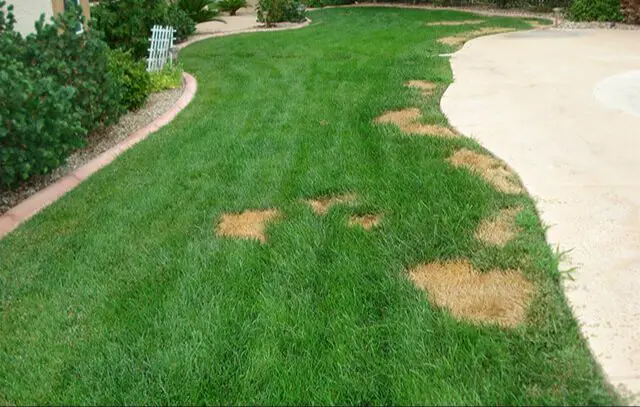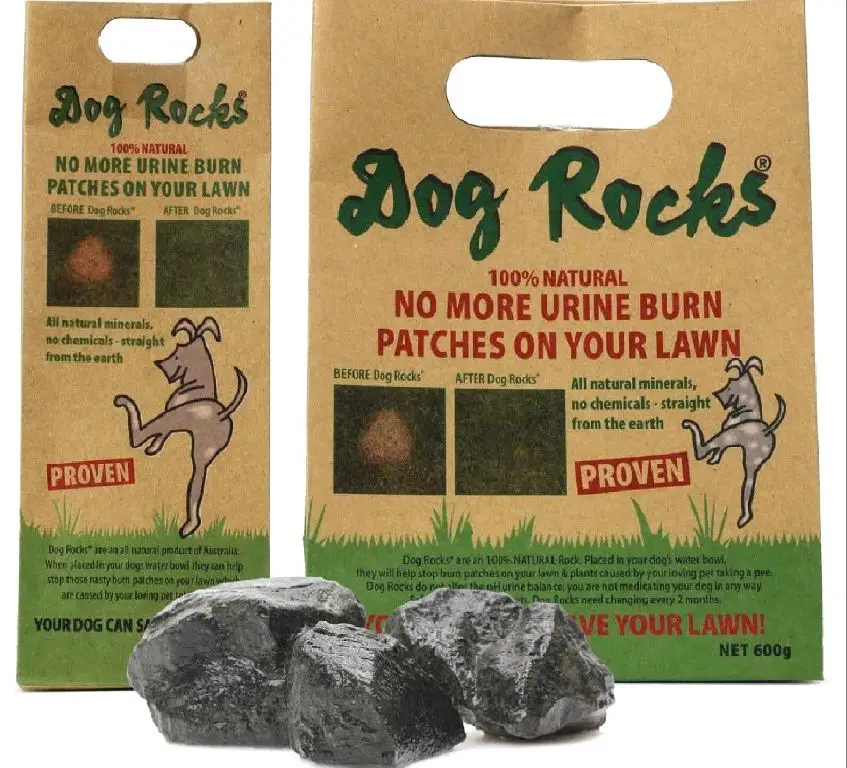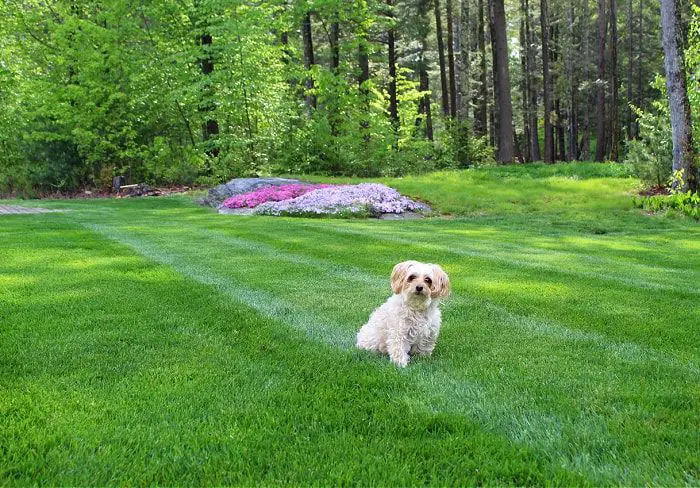What are Dog Rocks?
Dog Rocks are a product designed to prevent dog urine from burning lawns. They consist of a bag of small porous rocks that are placed in a dog’s water bowl.
The rocks contain a proprietary mix of minerals such as magnesium, potassium, and calcium that get absorbed into the dog’s drinking water. As the dog drinks the mineral-infused water, the minerals get into their system and alter the pH balance of their urine.
The idea is that the minerals make the dog’s urine less acidic, preventing it from burning or discoloring grass. The company claims that within 2-3 weeks of using Dog Rocks, dog urine will no longer damage lawns and the grass will remain lush and green.
Dog Rocks are marketed as an easy, natural way to stop dog urine from ruining lawns. The manufacturer claims the product is safe, non-toxic, and does not need to be refilled or replaced frequently.
How Dog Rocks Claim to Work

Dog Rocks are a product designed to reduce urine burns on grass caused by pet dogs. According to the manufacturers, the rocks contain a core made up of a proprietary mix of minerals, primarily magnesium and potassium.
When placed in a dog’s water bowl, the minerals from the rocks get dissolved into the water. As the dog drinks this mineral-infused water, the minerals bind to compounds like nitrogen and phosphorus that are present in the dog’s urine. This makes the urine less concentrated and acidic, reducing its damaging effects on grass.
The binding process continues within the dog’s digestive system and bloodstream. By the time the minerals leave the dog’s body through urine, they have already latched onto much of the nitrogen and phosphorus. The end result is a less caustic and grass-burning urine.
In this way, Dog Rocks claim to work as an all-natural supplement that can help protect lawns from urine damage, without the need for harsh chemicals or significant changes to a dog’s diet. The rocks simply infuse the water with minerals that neutralize the grass-burning compounds before they exit the dog’s body.
Evidence for Effectiveness
Several scientific studies have been conducted to evaluate the effectiveness of Dog Rocks at reducing lawn burns. The key measurement researchers look at is urine pH, since more alkaline urine with a higher pH causes brown patches on lawns.
In one study published in 2015, dogs were given Dog Rocks over a period of two weeks. Their urine pH was tested before and after. The results showed a significant drop in urine pH after taking Dog Rocks, going from an average of 8.5 down to 6.5-7.5. This indicates the rocks were effective at making the urine more acidic and less damaging to grass.

Another study from a university research group in 2013 focused specifically on lawn burns. They had dog owners spread their dog’s urine across marked plots in their lawn each day for 3 weeks. One group had their dogs taking Dog Rocks during this time. They measured the percentage of each plot that showed brown, burnt grass at the end. The Dog Rocks group had a 64% reduction in lawn burns compared to dogs not taking the rocks.
Based on these and other studies, the consensus is that Dog Rocks do succeed in their claims to reduce dog urine pH and resulting lawn burns. The mineral composition of the rocks causes urine acidification through dietary means. However, the effects can vary based on the individual dog, dosage, diet, and other factors.
Anecdotal Reviews
Dog Rocks have received mostly positive reviews and high satisfaction ratings from dog owners who have tried them. On popular ecommerce sites like Amazon and Chewy, Dog Rocks consistently receive 4+ star ratings. The vast majority of customers report being extremely satisfied with the results and claim Dog Rocks quickly and effectively stopped their dog’s lawn burning issues. Customers praise how easy Dog Rocks are to use since they simply have to add them to the water bowl. Many reviews mention noticing results within just a few days of starting use. While a small percentage of owners feel Dog Rocks didn’t work for their particular dog, the overwhelming consensus is that Dog Rocks are an affordable and convenient solution for preventing lawn spots.
On forums and Facebook groups for dog owners, the reviews are also mainly excellent. Owners describe being at their wits’ end dealing with yellow spots until they discovered Dog Rocks. After adding them to their dog’s water, the lawn burning stopped. Some owners did note it took 2-3 weeks to see full results. Overall, the first-hand experiences of dog owners who have tried Dog Rocks indicate they are a highly satisfactory product that delivers noticeable improvements very quickly.
Potential Concerns
While Dog Rocks may seem like an easy solution for reducing urine burn spots in your yard, there are some potential concerns to consider.
First, there is a question of safety. Dog Rocks contain trace amounts of heavy metals like iron and zinc that help bind the nitrogen in urine. Ingesting small amounts of Dog Rocks likely won’t harm most dogs, but some veterinarians warn against potential heavy metal toxicity if dogs consume many rocks. It’s best to monitor your dog closely if using Dog Rocks to ensure they are not eating them.
There are also environmental impacts of Dog Rocks. The metals they contain don’t simply make the nitrogen in urine inactive. The nitrogen compounds still exist, but are converted into forms that are less accessible to plants. This means the nitrogen may still leach into groundwater. Additionally, some environmental advocates argue that Dog Rocks enable unhealthy and unsustainable amounts of urine to be deposited in small areas of soil, overwhelming the soil’s natural buffering capacity.
While occasional spot treatment of urine patches may be acceptable, some believe routinely using Dog Rocks across a whole yard could contribute to greater environmental issues over time. Consider adjusting your dog’s diet or water intake to produce less urine, or regularly hosing down the yard instead.
Cost Analysis
Dog Rocks are designed to last for 2-3 months and costs vary depending on the size of the dog and quantity purchased. A starter set for a small dog containing 1⁄2 pound of rocks can cost around $20, while a set for a large dog with 1 pound of rocks can cost around $40. Refill packs are also available when the rocks need to be replaced.
Compared to some alternatives like special dog foods or medications that need continual purchasing, Dog Rocks can potentially save money over time after the initial purchase. However, other solutions like adding vinegar to the water are very inexpensive to implement. Overall, Dog Rocks are a moderately priced solution that can provide cost savings compared to products that require repeated buying.
Usage Tips
To get the most benefit from Dog Rocks, follow these usage tips:

- Place the recommended number of Dog Rocks in your pet’s water bowl. The number needed depends on bowl size. Generally 2-3 rocks for a medium sized bowl is sufficient.
- Replace the rocks every 2-4 months as they wear down.
- Use filtered or bottled water if possible, as tap water may contain minerals that reduce effectiveness.
- Make sure your pet has access to plenty of fresh water. Dehydration is a risk if the rocks deter drinking.
- Monitor your pet’s urine pH. It should fall in the ideal 6.2-6.5 range if the rocks are working.
- Consider using Dog Rocks alongside other tactics like improving lawn drainage and fertilizing to minimize burn spots.
Following the package instructions closely and monitoring your pet’s health will help ensure you safely receive the full benefits of Dog Rocks.
The Bottom Line
After analyzing evidence from various anecdotes and considering the product’s cost, reliability, safety, and ease of use, Dog Rocks appear to be a fairly effective product for reducing yellow spots on lawns. While the science behind their claims is murky, many dog owners report noticeable improvements in lawn appearance after using Dog Rocks consistently. Their low cost and lack of side effects also make them a relatively low-risk product to try. Dog Rocks likely won’t solve excessive dog urine issues completely, but seem worthwhile for dog owners frustrated by yellow spots who want an easy, natural solution.

Frequently Asked Questions
Dog Rocks have become an increasingly popular solution for reducing brown spots on lawns caused by dog urine. As their popularity has grown, some common questions have emerged about how well they work and how to use them properly. Here we answer some of the most frequently asked questions.
Do Dog Rocks really work?
According to many customer reviews, Dog Rocks do appear to be effective at reducing brown spots from dog urine. The rocks change the pH balance of your dog’s urine to make it more neutral and less damaging to grass. However, their effectiveness can depend on proper and consistent use.
How long do Dog Rocks last?
Each Dog Rock will typically last about 2-3 months before needing to be replaced. Larger dogs may require more frequent replacement. Make sure to monitor the rocks and swap them out when they have fully dissolved.
How many Dog Rocks does my dog need?
The number of rocks required depends on the size of your dog. Small dogs typically need 2 rocks. Medium dogs need 3-4 rocks. Large dogs need 5 rocks or more. Monitor your dog’s drinking to determine if you need more rocks.
Where do I put the Dog Rocks?
Simply place the Dog Rocks in your dog’s water bowl or dispenser. It’s best to use a plastic or ceramic bowl rather than a metal one. The rocks will slowly dissolve and change the pH each time your dog drinks.
How soon before Dog Rocks start working?
You should notice a difference in lawn spots within 2-3 weeks as the rocks neutralize your dog’s urine. However, existing brown spots will still need time to repair and re-grow new grass.
Alternatives to Consider
Dog Rocks are not the only option for reducing urine burn spots in your lawn. Here are some alternatives to consider:
Dietary Changes
Switching your dog to a low-protein or prescription dog food can reduce the nitrogen content in their urine, minimizing damage to grass. This is a simple solution but does require consistently feeding a special diet.
Lawn Treatment
Applying a liquid supplement like Dog Spot Defense or Doc’s Super Juice to your lawn can help neutralize nitrogen and increase grass resistance. However, these products must be reapplied frequently.
More Bathroom Walks
Taking your dog on more frequent walks can distribute their urine across multiple areas, preventing heavy damage in one spot. But this requires more time and effort on the owner’s part.
Artificial Grass
Installing artificial turf or potty patches eliminates urine burn issues entirely. However, it can be expensive upfront and lacks the appeal of natural grass for many dog owners.
When weighing alternatives, consider your dog’s unique needs and your available time and budget. Multiple solutions can also be combined for the best results.